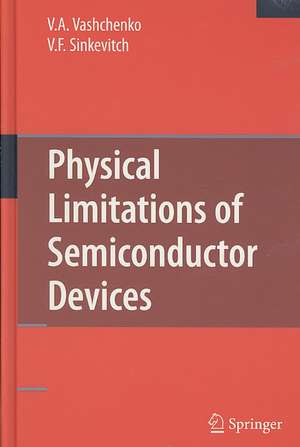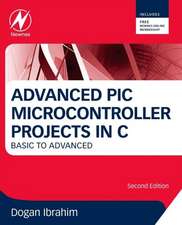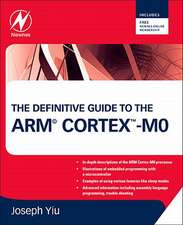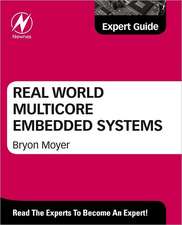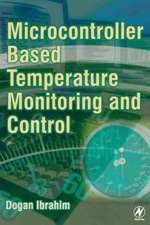Physical Limitations of Semiconductor Devices
Autor Vladislav A. Vashchenko, V. F. Sinkevitchen Limba Engleză Hardback – 18 apr 2008
| Toate formatele și edițiile | Preț | Express |
|---|---|---|
| Paperback (1) | 642.83 lei 6-8 săpt. | |
| Springer Us – 27 oct 2010 | 642.83 lei 6-8 săpt. | |
| Hardback (1) | 650.55 lei 6-8 săpt. | |
| Springer Us – 18 apr 2008 | 650.55 lei 6-8 săpt. |
Preț: 650.55 lei
Preț vechi: 765.36 lei
-15% Nou
Puncte Express: 976
Preț estimativ în valută:
124.49€ • 133.12$ • 103.79£
124.49€ • 133.12$ • 103.79£
Carte tipărită la comandă
Livrare economică 18 aprilie-02 mai
Preluare comenzi: 021 569.72.76
Specificații
ISBN-13: 9780387745138
ISBN-10: 0387745130
Pagini: 330
Ilustrații: XIII, 330 p.
Dimensiuni: 155 x 235 x 25 mm
Greutate: 0.7 kg
Ediția:2008
Editura: Springer Us
Colecția Springer
Locul publicării:New York, NY, United States
ISBN-10: 0387745130
Pagini: 330
Ilustrații: XIII, 330 p.
Dimensiuni: 155 x 235 x 25 mm
Greutate: 0.7 kg
Ediția:2008
Editura: Springer Us
Colecția Springer
Locul publicării:New York, NY, United States
Public țintă
ResearchCuprins
Failures of Semiconductor Device.- Theoretical Basis of Current Instability in Transistor Structures.- Thermal Instability Mechanism.- Isothermal Current Instability in Silicon BJT and MOSFETs.- Isothermal Instability in Compound Semiconductor Devices.- Degradation Instabilities.- Conductivity Modulation in ESD devices.- Physical Approach to Reliability.
Textul de pe ultima copertă
Physical Limitations of Semiconductor Devices provides an in depth understanding of the phenomena and regularities that play a critical role in the limitation of semiconductor device capabilities. It discusses how thermo-electrical breakdown, conductivity modulation, and electrical and spatial current instability phenomena affect the limitations of the devices. The authors give examples of the phenomena ranging from elementary semiconductor diode structures to discrete power and integrated components. They also show circuits both for silicon and compound semiconductor devices.
The material covers different levels of complexity including phenomenological, analytical, and numerical simulation. The material also explores the most complex phenomena of current filamentation and the impact of local structure defects, physical safe operating area limitations, and various scenarios of catastrophic failures in semiconductor devices. The emphasis of the book is on the physical approach to reliability assurance, safe operating area, and ESD problems.
Physical Limitations of Semiconductor Devices provides an important link between the theoretical aspects of the physics of semiconductor devices, non-linear physics, and the practical applications of microelectronics.
The material covers different levels of complexity including phenomenological, analytical, and numerical simulation. The material also explores the most complex phenomena of current filamentation and the impact of local structure defects, physical safe operating area limitations, and various scenarios of catastrophic failures in semiconductor devices. The emphasis of the book is on the physical approach to reliability assurance, safe operating area, and ESD problems.
Physical Limitations of Semiconductor Devices provides an important link between the theoretical aspects of the physics of semiconductor devices, non-linear physics, and the practical applications of microelectronics.
Caracteristici
Provides the description and translation of cross-disciplinary phenomena for reliability assurance including circuit design, ESD design and TCAD simulation Applies directly to the area of ESD protection design Explains complex physical descriptions so that they can be applied to the decision making process
